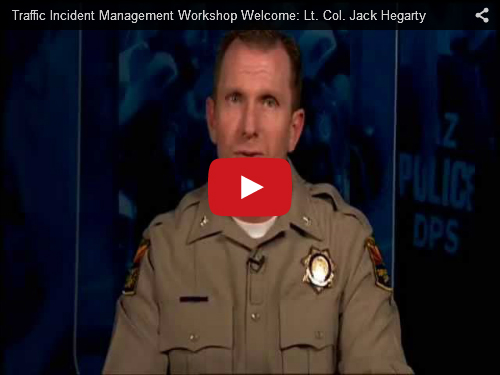June 7, 2013
Innovation of the Month: Traffic Incident Management Responder Training
Every Day Counts is currently focusing on 13 specific innovations for highway planning, design, construction and maintenance. To make sure each innovation gets its due, EDC News will provide information on a different innovation each month.

In June, the spotlight is on Traffic Incident Management (TIM) Responder Training. In addition to being sponsored by EDC, it is also a product of the Second Strategic Highway Research Program (SHRP2). Traffic incidents – including crashes, disabled vehicles and debris on the road - create unsafe driving conditions. They put motorist and responder lives at risk and account for approximately 25% of all traffic delays.
This video was developed to accompany an earlier training course and offers an explanation of the need for Traffic Incident Management Responder Training.
Webinar: June 19, 2013; 2:00-4:00 Eastern -SHRP2 Traffic Incident Management Responder Training
Innovation Grants Named
Secretary LaHood awarded more than $16 million to 14 innovative highway and bridge projects in 13 states and the District of Columbia that will improve safety, create jobs and enhance the quality of the nation’s transportation infrastructure.
The Federal Highway Administration's (FHWA) Highways for LIFE (HfL) grants encourage the use of innovative technologies and practices on America's roads and bridges, such as accelerated bridge construction, cutting-edge building materials and advanced methods for construction project management. FHWA received 29 applications requesting more than $43 million.
Click here for descriptions of the FHWA Highways for Life FY2013 discretionary grants
National Park Service Learns About CM/GC
National Park Service staff took part in a May 30 webinar on the construction manager/general contractor (CM/GC) project delivery method. FHWA's Eastern Federal Lands Highway Division offered the event. FHWA has started two CM/GC contracts on National Park Service land along the Blue Ridge Parkway, one to fix retaining walls and the other to replace a bridge at Fort Pulaski National Military Park in Georgia. The webinar's purpose was to educate the National Park Service on how CM/GC contracting works, how it compares to other contracting types, the types of project it's best for, and what to expect during the contracting process.
For more information about CM/GC, go here
Rhode Island Tests 3D Technology
The Rhode Island Department of Transportation used three-dimensional (3D) modeling on a project to reconstruct a 7-mile stretch of Route 165 from Route 3 to the Connecticut State line. Workers used a laser to scan the road section in 53 setup positions over 4 days, collecting a total of 190 million points with coordinate and elevation values. This information was used to create a 3D surface model of existing road conditions to within 4 millimeters of accuracy and generate a grading surface model to build the new road.
Read more information 3D technology.


